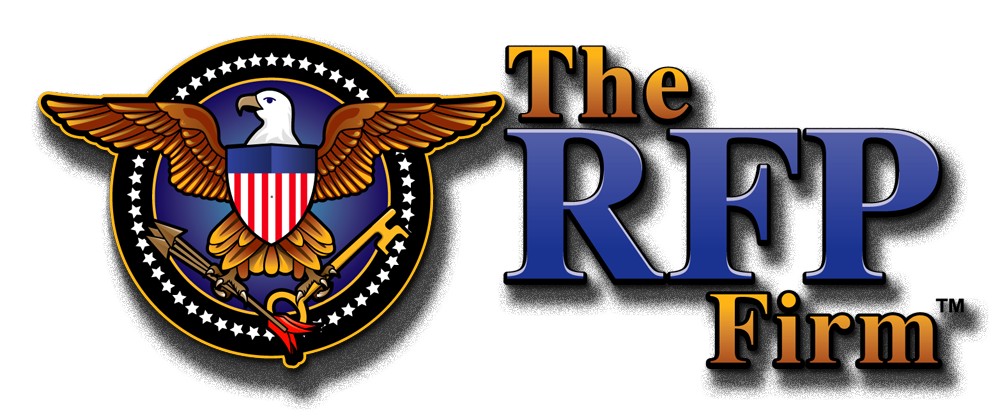Blog
Government & Commercial Proposal Writing Services
 The RFP Firm is expert at writing proposals in Response to Federal and State Government RFP Solicitations that will give you a Competitive Advantage over your competition.
The RFP Firm is expert at writing proposals in Response to Federal and State Government RFP Solicitations that will give you a Competitive Advantage over your competition.


Proposal Writing Services , RFP Proposal Consulting, Government RFP writing
Government RFP Proposal Writing Services
Government & Commercial Proposal Writing Services
 The RFP Firm is expert at writing proposals in Response to Federal and State Government RFP Solicitations that will give you a Competitive Advantage over your competition.
The RFP Firm is expert at writing proposals in Response to Federal and State Government RFP Solicitations that will give you a Competitive Advantage over your competition.

Create a Winning Proposal by Creating a Custom Winning RFP Proposal Template
Key to writing a winning proposal is to create the right balance between providing too much content and too little. Be sure to answer all potentially lingering questions, but do not provide more information than what is being asked for. Remember that the evaluation committee will be measuring how well you provided responses to the information requirements and that is what they will be looking for.
Steps to Success
At The RFP Firm, one of the critical steps we use to prepare an RFP Proposal Template to ensure that all content requirements presented in the RFP are addressed. To do this you will want to:
Most RFPs will describe how the proposal will be evaluated and what sections are more important that others, thereby letting you know where to put your major effort.
Customize the Proposal Template
Your proposal template must be customized to fit the requirements of the particular RFP. Everyone will be different even from the same agency, so start from scratch on each and make no assumptions about what should or should not be included. This is assuming that the proposal is solicitated by a government agency. Unsolicited proposals require a completely different strategy which we will leave to a different discussion.
Identify the various components that will be included, which typically will include:
These are often broken out into separate Volumes to enable different resources within the evaluation committee to be able to review one particular section without bias.
Often, specific information is to be included on the Cover page so be sure to identify the content that has been called out for inclusion. A Transmittal Letter is sometimes requested, but even when not, it is good to include along with an Executive Summary to introduce the reader to your company and give them some background as to why as contractor you will be able to exceed their expectations.
Keep your Transmittal Letter to no more than two pages. This is true also for the Executive Summary as the key information to be evaluated will be presented throughout the proposal with support and proofs ensuring that you are creating confidence in your company’s ability to provide all of the requested services with a successful outcome.
A detailed table of contents can also serve as a cross-matrix to show that you have addressed all of the RFP requirements. Using headers and sub-headers that match those used in the RFP enables the evaluators to easily find what they are looking for.
Key Proposal Content
Background: Initially provide your understanding of the background of the project explaining the current state of the problems and your interest in helping the agency solve them. Provide industry knowledge to help get your message across and prove that you have the know how to tackle the issues at hand. You might even want to take a deep dive into the problem and how you have successfully solved similar problems in the past for other clients.
Your Solution: Identify your knowledge of the problem, how you have address similar problems in the past, how the problem and typically been addressed in the industry, and why your solution has proven to be more effective at fixing the problem. In your technical approach identify your vision and discuss the details of your methodologies, important milestones, and potential schedules. Provide details of your project team, their experience, qualifications, and responsibilities. Include a quality control program that helps to ensure project success by measuring and reporting on the project’s progress. Describe how you will do that, what metrics are used and how you will share the results of your QC program.
Project Deliverables: Gaining confidence is key throughout the proposal and one way to support this is to share your list and schedule for the project deliverables. Provide enough detail so that the agency can visualize the project as you describe it and visualize the end goal.
Required Resources: Share details of the resources you will be assigning to this project, including staff, materials, and costs. You project budget should include all supplies needed to implement the project from start to finish, including manpower. Your cost breakdown should identify why you need those specific resources and what they will be used for so that they understand and provide the buy-in you want. Keep this information toward the end of the proposal so that you have already established their support for what you are proposing.
Conclusion: In your RFP Proposal Template, provide space for a final summary and brief overview of what you have proposed so far. Emphasize the most relevant and important evidence that proves they will receive a successful outcome. Include any additional graphs, charts, etc. that support your conclusions.